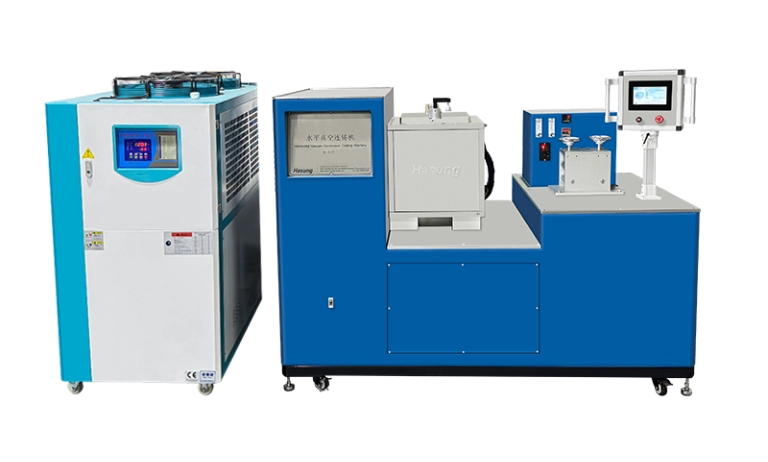Horizontal Vacuum Continuous Casting Machine (HVCCM) is a precision equipment used in the metallurgical industry to produce high-quality metal products. This technology has revolutionized the way metal is cast and offers many advantages over traditional casting methods. In this article, we will discuss the process principles, components and applications of horizontal vacuum continuous casters.
Learn about horizontal vacuum continuous casting
Before delving into the principles of the process, it is necessary to understand what horizontal vacuum continuous casting means. The method involves continuously casting molten metal into a solid form while maintaining a vacuum environment. The main goal is to produce high-purity metal products with minimal defects, which is critical for industries such as aerospace, automotive and electronics.
Key components of HVCCM
Furnace: The process starts with a furnace where the raw materials are heated to their melting point. The furnace is usually equipped with induction heating or electric arc technology to ensure even heating.
Heating Furnace: After melting, the molten metal is transferred to the holding furnace. The furnace maintains the temperature of the molten metal and ensures it remains liquid until it is ready to be cast.
Casting Mold: The casting mold is a key component of HVCCM. It is designed to give shape to molten metal as it solidifies. Molds are typically made from high-quality materials that can withstand extreme temperatures and pressures.
Vacuum Chamber: The vacuum chamber is where the actual casting takes place. By creating a vacuum environment, the machine minimizes the presence of gases and impurities that can cause defects in the final product.
Cooling System: Once the molten metal is poured into the mold, it begins to cool and solidify. The cooling system ensures that the metal cools evenly, preventing deformation or cracking.
Cutting and finishing equipment: After solidification, the continuous cast product is cut to the required length and subjected to a finishing process to achieve the required surface quality.
HVCCM process principle
The process principle of horizontal vacuum continuous casting machine can be divided into several key stages:
1. Melting and Insulation
The process begins with the raw materials melting in a furnace. The furnace is designed to reach high temperatures quickly and efficiently. Once the metal is melted, it is transferred to a holding furnace where it is maintained at a constant temperature. This stage is crucial as it ensures that the molten metal is uniform and free of impurities.
2. Vacuum creation
Before the casting process begins, a vacuum is created in the casting chamber. This is accomplished by using a vacuum pump to remove air and other gases from the chamber. The vacuum environment is essential to prevent oxidation and contamination of the molten metal, which can lead to defects in the final product.
3. Pouring molten metal
Once the vacuum is established, the molten metal is poured into the mold. The design of the mold allows for the continuous flow of metal that is the hallmark of the HVCCM process. Care is taken during the pouring process to ensure that the metal fills the mold evenly and there is no turbulence that could introduce air bubbles.
4. Solidification
As the molten metal fills the mold, it begins to cool and solidify. The cooling process is carefully controlled to ensure even solidification. The vacuum environment plays a vital role here as it helps maintain a constant temperature and prevents the formation of bubbles.
5. Continuous withdrawals
One of the distinguishing features of HVCCM is the continuous removal of solidified metal from the mold. As the metal solidifies, it is gradually pulled from the mold at a controlled rate. This continuous process produces long lengths of metal products that can then be cut to size.
6. Cutting and finishing
Once the required length of metal is pulled out, it is cut using specialized cutting equipment. Finishing processes may include surface treatment, machining or other methods to achieve required specifications. The final product is then checked for quality and consistency.
Advantages of horizontal vacuum continuous casting
Horizontal vacuum continuous casting machine has the following advantages compared with traditional casting methods:
High Purity: The vacuum environment minimizes the presence of gases and impurities, resulting in high-purity metal products.
Reduced Defects: The controlled cooling and solidification process reduces the possibility of defects such as pores and inclusions.
Continuous Production: The continuous casting process can efficiently produce long metals, reducing waste and increasing productivity.
VERSATILITY: HVCCM can be used on a variety of metals, including aluminum, copper and specialty alloys, making it a versatile choice for manufacturers.
Cost Effectiveness: While the initial investment in HVCCM technology can be high, the long-term savings in material costs and improvements in production efficiency often outweigh these costs.
Application of HVCCM
Horizontal vacuum continuous casting machines are widely used in various industries, including:
Aerospace: High-purity metals are critical for aerospace components where performance and reliability are critical.
Automotive: The automotive industry requires high-quality metal products to manufacture engine parts, transmission components and structural elements.
ELECTRONICS: The electronics industry relies on high-purity metals to make circuit boards, connectors and other components.
Medical Devices: The medical field requires materials that meet strict quality standards, making HVCCM ideal for the production of medical device components.
in conclusion
Horizontal vacuum continuous casters represent a major advance in metal casting technology. By understanding the principles of the process and the various components involved, manufacturers can use this technology to produce high-quality metal products with minimal defects. As industries continue to demand higher purity and performance from materials, HVCCM will play an increasingly important role in meeting these needs. With their numerous advantages and wide range of applications, horizontal vacuum continuous casters will continue to be the cornerstone of modern metallurgy.
Post time: Oct-16-2024












